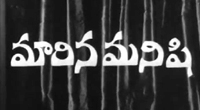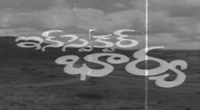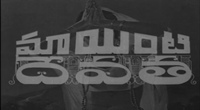Ch?shingura (??? The Treasury of Loyal Retainers) is the title given to fictionalized accounts in Japanese literature, theatre, and film that relate to the historical incident involving the forty-seven r?nin and their mission to avenge the death of their master, Asano Naganori. Including the early Kanadehon Ch?shingura (???????), the story has been told in kabuki, bunraku, stage plays, films, novels, television shows and other media. With ten different television productions in the years 1997–2007 alone, Ch?shingura ranks among the most familiar of all historical stories in Japan.
Screenplay
The historical basis for the narrative begins in 1701. The ruling sh?gun Tokugawa Tsunayoshi placed Asano Takumi-no-kami Naganori, the daimy? of Ak?, in charge of a reception of envoys from the Imperial Court in Kyoto. He also appointed the protocol official (k?ke) Kira K?zuke-no-suke Yoshinaka to instruct Asano in the ceremonies. On the day of the reception, at Edo Castle, Asano drew his short sword and attempted to kill Kira. His reasons are not known, but many purport that an insult may have provoked him. For this act, he was sentenced to commit seppuku, but Kira did not receive any punishment. The shogunate confiscated Asano's lands (the Ak? Domain) and dismissed the samurai who had served him, making them r?nin.
Nearly two years later, ?ishi Kuranosuke Yoshio, who had been a high-ranking samurai in the service of Asano, led a group of forty-six/forty-seven of the r?nin (some discount the membership of one for various reasons). They broke into Kira's mansion in Edo, captured and executed Kira, and laid his head at the grave of Asano at Sengaku-ji. They then turned themselves in to the authorities, and were sentenced to commit seppuku, which they all did on the same day that year. ?ishi is the protagonist in most retellings of the fictionalized form of what became known as the Ak? incident, or, in its fictionalized form, the Treasury of Loyal Retainers (Ch?shingura).
In 1822, the earliest known account of the Ak? incident in the West was published in Isaac Titsingh's posthumous book, Illustrations of Japan.
In the story of the 47 r?nin, the concept of ch?shin gishi is another interpretation taken by some. Ch?shin gishi is usually translated as "loyal and dutiful samurai". However, as John Allen Tucker points out that definition glosses over the religious meaning behind the term. Scholars during that time used that word to describe people who had given their lives for a greater cause in such a way that they deserved veneration after death. Such people were often entombed or memorialized at shrines.
However, there is a debate on whether they even should be worshiped and how controversial their tombs at Sengakuji are. Tucker raises a point in his article that the r?nin were condemned as r?nin, but then in the end their resting places are now honored. In other words, it is like those that regarded the r?nin as ch?shin gishi were questioning the decision of the Bakufu (the shogunate, the authorities who declared them r?nin). Perhaps even implying that the Bakufu had made a mistake. Those recognizing the r?nin as ch?shin gishi were really focusing on the basics of samurai code where loyalty to your master is their ultimate and most sacred obligation.
In Chinese philosophy, Confucius used to say that the great ministers served their rulers the moral way. Early Confucianism emphasized loyalty, the moral way and objection and legitimate execution of wrongdoers. Ch?shin gishi is interpreted as almost a blind loyalty to your master. In the Book of Rites, something similar to ch?shin gishi is mentioned which is called zhongchen yishi. Interpretations of the passage from the Book identified those who would sacrifice themselves in the name of duty should live on idealized. However, there were also those that agreed on condemnation of the r?nin as criminals such as Ogy? Sorai. So definitely there was controversy revolving around the legitimacy of the r?nins' actions. Sorai, Sat? Naokata and Dazai Shundai were some of those who believed that the r?nin were just criminals and had no sense of righteousness. Because they did violate the law by killing Kira Yoshinaka.
Confucianism and the deification of the r?nins collision is something that is very important to the way to understanding Bakufu law. Confucian classics and the Bakufu law may have seemed to compliment each other to allow revenge. Hayashi H?k? claims that the idolization of the r?nin may have been allowed because their actions matched with the Chinese loyalists. Also suggesting that only by killing themselves would they be able to claim their title as ch?shin gishi. There then, Hok? summarized that there might have been a correlation between the law and the lessons put forth in Confucian classics.
Actually during the seventeenth century there was a system of registered vendettas. This meant that people could avenge a murder of a relative, but only after their plans strictly adhered to legal guidelines. However, the Ak? vendetta did not adhere to this legalized system. Thus, they had to look to Confucian texts to justify their vendetta. Ch?shin gishi is something that cannot be looked on lightly in regards to this story because it is the main idea in this story. Loyalty and duty to one's master as a retainer is everything in the story of the 47 r?nin.
Being able to draw Confucianist values from this story is no coincidence, it is said that Asano was a Confucian. So it would only seem natural that his retainers would practice the same thing. Their ultimate sacrifice for their master is something that is held in high regard in Confucianism because they are fulfilling their responsibility to the fullest extent. There is nothing more after that kind of sacrifice. At that point the warriors have given their everything to their master. That type of devotion is hard to contest as something other than being a ch?shin gishi.
The puppet play based on these events was entitled Kanadehon Ch?shingura and written by Takeda Izumo (1691–1756), Miyoshi Sh?raku (c. 1696 – 1772) and Namiki Senry? (1695 – c. 1751). It was first performed in August 1748 at the Takemoto-za theatre in the D?tonbori entertainment district in Osaka, and an almost identical kabuki adaptation appeared later that year. The title means "Kana practice book Treasury of the loyal retainers". The "kana practice book" aspect refers to the coincidence that the number of r?nin matches the number of kana, and the play portrayed the r?nin as each prominently displaying one kana to identify him. The forty-seven r?nin were the loyal retainers of Asano; the title likened them to a warehouse full of treasure. To avoid censorship, the authors placed the action in the time of the Taiheiki (a few centuries earlier), changing the names of the principals. The play is performed every year in both the bunraku and kabuki versions, though more often than not it is only a few selected acts which are performed and not the entire work.
Utagawa Kuniyoshi, The Monster's Ch?shingura (Bakemono Ch?shingura), ca. 1836, Princeton University Art Museum, Acts 9–11 of the Kanadehon Ch?shingura with act nine at top right, act ten at bottom right, act eleven, scene 1, at top left, act eleven, scene 2 at bottom left
Utagawa Kuniyoshi, The Monster's Ch?shingura (Bakemono Ch?shingura), ca. 1836, Princeton University Art Museum, Acts 5–8 of the Kanadehon Ch?shingura with act five at top right, act six at bottom right, act seven at top left, act eight at bottom left
Utagawa Kuniyoshi, The Monster's Ch?shingura (Bakemono Ch?shingura), ca. 1836, Princeton University Art Museum, Acts 1–4 of the Kanadehon Ch?shingura with act one at top right, act two at bottom right, act three at top left, act four at bottom left
Sections of the following synopsis of Kanadehon Ch?shingura are reproduced by permission from the book A Guide to the Japanese Stage by Ronald Cavaye, Paul Griffith and Akihiko Senda, published by Kodansha International, Japan:
Kanadehon Ch?shingura ("The Treasury of Loyal Retainers") is based on a true incident which took place between 1701 and 1703. To avoid shogunate censorship, the authors set the play in the earlier Muromachi period (1333–1568) and the names of the characters were altered. However some names sounded similar and those with knowledge knew what they were referring to in reality. For example the real person ?ishi Kuranosuke was changed to ?boshi Yuranosuke. The play therefore fuses fiction and fact.
The central story concerns the daimy? En'ya Hangan, who is goaded into drawing his sword and striking a senior lord, K? no Moron? (Note: although the furigana for Moron?'s name is Moronao, the pronunciation is Moron?). Drawing one's sword in the sh?gun's palace was a capital offense and so Hangan is ordered to commit seppuku, or ritual suicide by disembowelment. The ceremony is carried out with great formality and, with his dying breath, he makes clear to his chief retainer, ?boshi Yuranosuke, that he wishes to be avenged upon Moron?.
Forty-seven of Hangan's now masterless samurai or r?nin bide their time. Yuranosuke in particular, appears to give himself over to a life of debauchery in Kyoto's Gion pleasure quarters in order to put the enemy off their guard. In fact, they make stealthy but meticulous preparations and, in the depths of winter, storm Moron?'s Edo mansion and kill him. Aware, however, that this deed is itself an offense, the retainers then carry Moron?’s head to the grave of their lord at Sengaku-ji temple in Edo, where they all commit seppuku.
Act I, Tsurugaoka kabuto aratame ("The Helmet Selection at Hachiman Shrine")
This play has a unique opening, in which the curtain is pulled open slowly over several minutes, accompanied by forty-seven individual beats of the ki, one for each of the heroic r?nin. Gradually, the actors are revealed in front of the Hachiman Shrine in Kamakura slumped over like lifeless puppets. As the giday? narrator speaks the name of each character he comes to life. Lord Moron?'s evil nature is immediately demonstrated by his black robes and the furious mie pose which he strikes when his name is announced. He is hostile to the younger, inexperienced lords. They have all gathered to find and present a special helmet at the shrine and it is Hangan's wife, Kaoyo, who is the one to identify it. When the ceremony is over and he is eventually left alone with Kaoyo, Moron? propositions her but she rejects his amorous advances.
Act II, The Scriptorium of the Kench?ji Temple
When Act II is performed as Kabuki it is often given in a later version, first performed by Ichikawa Danj?r? VII (1791–1859), and entitled "The Scriptorium of the Kench?ji Temple". A performance of Act II is extremely rare, even "complete" (t?shi ky?gen) performances almost never include it. The original puppet and Kabuki scripts of Act II are similar and the story is as follows –
The act takes place in the mansion of the young daimy?, Momonoi Wakasanosuke. His chief retainer, Kakogawa Honz?, admonishes the servants for gossiping about the humiliation of their master by Moron? at the previous day's ceremony at the Tsurugaoka shrine. Even Honz?'s wife, Tonase, and daughter, Konami, speak of it. ?boshi Rikiya, Konami's betrothed and the son of En'ya Hangan’s chief retainer, ?boshi Yuranosuke, arrives with a message that Moron? has commanded that both Hangan and Wakasanosuke appear at the palace by four in the morning in order to
Watch movie Chushingura online on Amazon
Watch movie Chushingura online
Watch The Movie On PrimeDayavan Full HD Movie Download

Gentleman Full HD Movie Download

Ram Jaane Full HD Movie Download

Jeene Ki Arzoo Full HD Movie Download

Nazrana (1987) Full HD Movie Download
.jpg)
Balwaan (2009) Full HD Movie Download
.jpg)
Hawai Dhamaka Full HD Movie Download

Eradane Maduve Full HD Movie Download

Summer School Full HD Movie Download

Gopala Rao Gari Ammayi Full HD Movie Download

Khaidi Inspector Full HD Movie Download

Asadhyudu Full HD Movie Download

Circle Of Two Full HD Movie Download

Sandhwanam Full HD Movie Download

Maha Shakti Full HD Movie Download

Julie (2004) Full HD Movie Download
.jpg)
Maarina Manishi Full HD Movie Download

Needa The Shadow Full HD Movie Download

Inspector Bharya Full HD Movie Download

Maa Inti Devata Full HD Movie Download

Band Baaja Baaraat Full HD Movie Download

Download latest Movie from bollywood
- 1> baaghi 3
- 2> THE SKY IS PINK MOVIE FULL STORY AND REVIEW
- 3> Luka Chuppi
- 4> TO ALL THE BOYS I’VE LOVED BEFORE
- 5> Kabir Singh
- 6> Street Dancer 3D
- 7> Simmba
- 8> Gone Girl
- 9> The Girl Who Lived
- 10> Ludo
- 11> DILWALE DULHANIA LE JAYENGE
- 12> GUILTY
- 13> The Godfather
- 14> Adventures of Rusty
- 15> Sooryavanshi
- 16> Satyameva Jayate 2
- 17> Thappad
- 18> Bhool Bhulaiyaa 2
- 19> KGFChapter 2
- 20> Mardaani 2
- 21> Pinjar
- 22> Shivaji maharaj
- 23> Ek Villian 2
- 24> Hungama 2
- 25> Divergent
- 26> Mumbai Saga
- 27> The Internship
- 28> HIT (telugu)
- 29> Panga
- 30> The perfect date
- 31> 16 December
- 32> Gopala Gopala (Telugu)
- 33> Brahmastra
- 34> Gangubai Kathiawadi
- 35> Manmadhudu
- 36> Nenu local
- 37> Mahanati
- 38> Shatamanam bavathi
- 39> Lagaan
- 40> After
- 41> MOM
- 42> Shamshera
- 43> Raguvaran BTech
- 44> Khakee
- 45> The villain
- 46> OM
- 47> Mr. perfect
- 48> Bueatifull mind
- 49> Hichki
- 50> Gabbar Singh
- 51> Jogi
- 52> Before Sunrise
- 53> Before Sunset
- 54> Before Midnight
- 55> The Big Bull
- 56> Top Gun: Maverick
- 57> The Purge
- 58> The Sky is Pink
- 59> Laxmmi Bomb
- 60> Sadak 2
- 61> Sufna
- 62> Prithviraj
- 63> PK
- 64> Coolie No 1(2020)
- 65> Black Widow
- 66> Dear Zindagi
- 67> Dil Bechara
- 68> PHIR HERA PHERI
- 69> WAR
- 70> Dostana
- 71> RRR: Roudram Ranam Rudhiram
- 72> Maidan
- 73> Dabbang 3
- 74> Chhalaang
- 75> life as we know it
- 76> SherShaah
- 77> Sandeep Aur Pinky Faraar
- 78> Event Horizon
- 79> 83
- 80> Radhe: Your Most Wanted Bhai
- 81> Gunjan Saxena: The Kargil Girl
- 82> Mr India
- 83> Vivah
- 84> Anokha Bandhan
- 85> Ghost
- 86> Bhoot: Part One - The Haunted Ship
- 87> Haseen Dilruba
- 88> Laal Singh Chaddha
- 89> Qismat
- 90> Rajput
- 91> Drive
- 92> Dil Chahta Hai
- 93> Dil Ki Baazi
- 94> Dil Ka Rishta
- 95> Teesri Manzil
- 96> Dil
- 97> Love Aaj Kal
- 98> Khaali Peeli
- 99> Bunty Aur Babli 2
- 100> Atrangi Re
- 101> Gulabo Sitabo
- 102> Jodi
- 103> Suraj Pe Mangal Bhari
- 104> Deewana
- 105> Attack
- 106> Sardar Udham Singh
- 107> Toofan
- 108> THE LOVEBIRDS
- 109> Jersey
- 110> Ginny Weds Sunny
- 111> Thalaivi
- 112> Shiddat
- 113> Angels vs Zombies
- 114> Koi Mil Gya
- 115> Thank God
- 116> Bhuj: The Pride of India
- 117> Hum Aapke Hain Kaun
- 118> The Platform
- 119> Bird Box
- 120> Roohi Afzana
- 121> Torbaaz
- 122> Nikamma
- 123> World War Z
- 124> Extraction
- 125> Train to Busan
- 126> Life of Pi
- 127> SHAADI MEIN JROOR AANA
- 128> Himmat Aur Mehnat
- 129> To All The Boys: P.S. I Still Love You
- 130> Mimi
- 131> Good Newwz
- 132> Shubh Mangal Zyada Saavdhan
- 133> Raabta
- 134> Harry Potter and the Philosopher's Stone
- 135> Harry Potter and the Chamber of Secrets
- 136> Chhapaak
- 137> War of the Worlds
- 138> Harry Potter and the Prisoner of Azkaban
- 139> Harry Potter and the Goblet of Fire
- 140> MURDER MYSTERY
- 141> Shakuntala Devi
- 142> Bachchan Pandey
- 143> Jayeshbhai Jordar
- 144> Sheer Qorma
- 145> Saina
- 146> 'O' Pushpa I hate tears
- 147> Kedarnath
- 148> MS Dhoni The Untold Story
- 149> Chhichhore
- 150> Badhaai Ho
- 151> Unstoppable
- 152> Oz the Great And Powerful
- 153> The Girl on the Train
- 154> Haathi Mere Saathi 2020
- 155> The Conjuring: The Devil Made Me Do It
- 156> Gandhi Se Pehle Gandhi
- 157> The Song of Scorpions
- 158> Srimanthudu
- 159> Hello Guru Prema Kosame
- 160> Beauty and The Beast
- 161> Black Panther
- 162> Charlie and the Chocolate Factory
- 163> Bole Chudiyan
- 164> Fidaa
- 165> Duvvada Jagannadham
- 166> Bruce Lee: The Fighter
- 167> Hyper
- 168> Yaara
- 169> Red (2020)
- 170> Shivam
- 171> That Is Mahalakshmi
- 172> Nishabdham
- 173> Aashram 2020 web series
- 174> Laxmii
- 175> Mismatched
- 176> STUDENT OF THE YEAR 2
- 177> NAIL POLISH
- 178> Ramprasad Ki Tehrvi
- 179> KAAGAZ
- 180> 12 o Clock
- 181> The Power
- 182> bolo hau
- 183> Tribhanga
- 184> JAMUN
- 185> Madam Chief Minister
- 186> Maasaab
- 187> Aadhaar
- 188> Tanhaji
- 189> Bhaagi 3
- 190> Bhootnath
- 191> MALANG
- 192> Jai Mummy Di
- 193> Haathi Mere Saathi 2021
- 194> Shakeela
- 195> Unpaused
- 196> Annayya
- 197> Vamsoddharakudu
- 198> Mrugaraju
- 199> Narasimha Naidu
- 200> Sankranti
- 201> Manasu Maata Vinadhu
- 202> Anjaane
- 203> Apaharan
- 204> Bachke Rehna Re Baba
- 205> Bewafaa
- 206> Roohi
- 207> Radhe
- 208> Zindagi Khoobsoorat Hai
- 209> Yeh Mohabbat Hai
- 210> Yeh Kya Ho Raha Hai?
- 211> The Tomorrow War
- 212> DehradunDiary
- 213> Meri Shaadi Karaoo
- 214> Matruu Ki Bijlee Ka Mandola
- 215> No One Killed Jesica
- 216> Aag Ka Goola
- 217> Eight Million Dollars
- 218> Three Hundred
- 219> Cats and Dog
- 220> Decoy
- 221> Gold Rush
- 222> You Have Got Mail
- 223> Final Destination three
- 224> Tofan
- 225> Jungle
